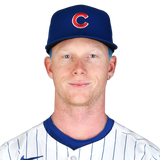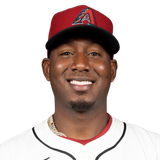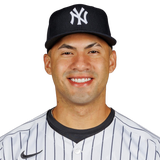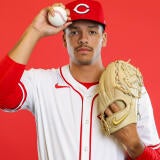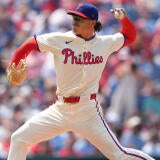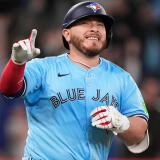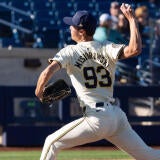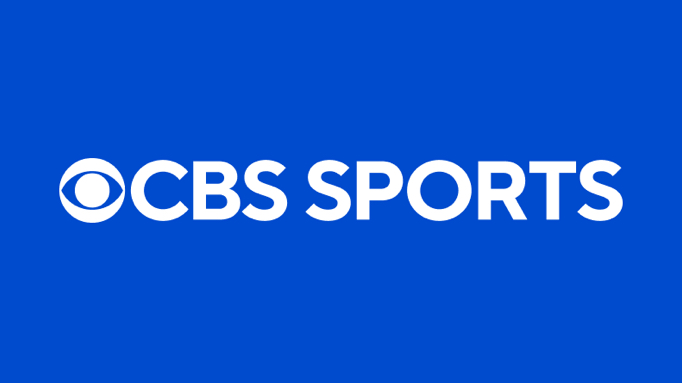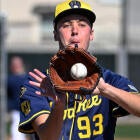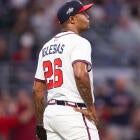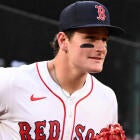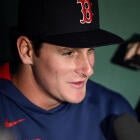| ||||||||||||
Fantasy Baseball: Geraldo Perdomo, Pete Crow-Armstrong among the early standouts that may be fakeouts
They've given you much to celebrate so far, but their best is probably behind them
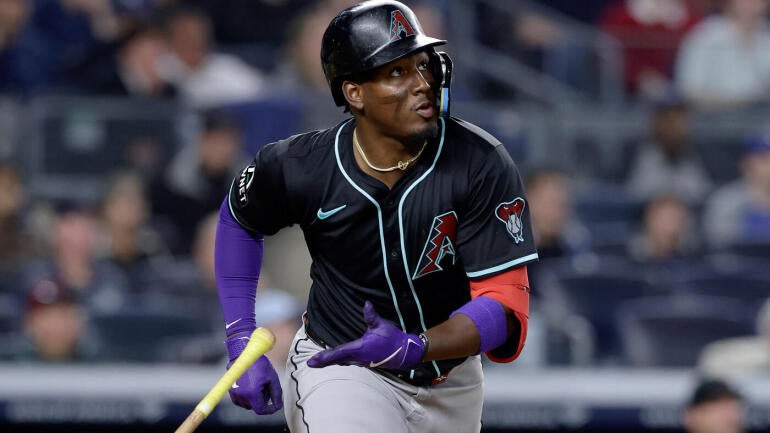
Time to be the bad guy.
Small samples -- which is still what we're working with here in early May -- make for ample disappointment. So many of the players you were counting on haven't lived up to their potential yet, which puts you in the position of desperately needing something to celebrate.
These five have been exactly that: the spring in your step, the apple of your eye, the reason you can wake up and face another day.
But it stands to reason that if small samples make for underachievers, they also make for overachievers, and among those who have been at the tip-top of their game, these five give me the most reason for skepticism (as well as Carson Kelly, but you already knew that). It doesn't mean you have to trade them or dump them or do anything you don't want to do with them, but you should have all the facts.
I'm just doing my job, ma'am.
Pete Crow-Armstrong, OF, Cubs
The Crow-Armstrong enthusiasts are particularly loud and oddly threatening, so I promise I'm not riling them up for the fun of it. I can at least say that his worst-case scenario is probably off the table for 2025, and I've gone so far as to rank him as a top-24 outfielder for the rest of the season, mostly because his base-stealing prowess makes for a nice safety net if he were to regress as a hitter.
But to be clear, that's what I expect to happen. He still swings at a ton of bad pitches, his 43.8 percent chase rate ranking fourth-worst among qualifiers, which should lead to less contact and lower-quality contact in the long run. The contact quality is middling to begin with, which could pose a problem with him having the eight-highest fly-ball rate. Fly balls that don't clear the fence are generally easy outs, and a disproportionate number of his have cleared the fence so far. I still see Crow-Armstrong's batting average landing in the .230-.240 range, and I'd wager that he's hit at least one-third of his home runs already.
Geraldo Perdomo, SS, Diamondbacks
| ||||||||||||
The Perdomo extension this offseason met mostly with groans from Fantasy Baseballers because it meant that prospect Jordan Lawlar no longer had a path to playing time. Clearly, no one imagined Perdomo would be a top-five shortstop, including No. 1 in Head-to-Head points, more than a month into the season.
How has he done it? For starters, he's run with reckless abandon. Despite his 40th percentile sprint speed, he's already equaled last season's stolen base total with nine and is more than halfway to his career high of 16. He's also walked at an elite rate: 15.8 percent, which puts him in the 93rd percentile for that category. But the biggest improvement for Perdomo is the power. Never before has he hit even double-digit home runs in a season, but he's now on pace for 25. This can happen with 25-year-olds, but usually there's a commensurate improvement in strength. Not so for Perdomo, whose average exit velocity is still only 38th percentile, and his max is even worse. In fact, he has yet to meet any of his five hardest-hit balls from last season, which almost certainly would have happened if he had legitimately grown as a power hitter.
Once the power output normalizes, he probably won't be pitched as carefully, which will cause the walks to normalize, which will mean he no longer gets as many stolen base opportunities. There could be a ripple effect that knocks him out of not just the top five but also the top 15 at a deep position.
Tyler Mahle, SP, Rangers
| ||||||||||||
You probably don't need me to tell you that Mahle won't sustain a 1.19 ERA, but you made need me to tell you that, when all is said and done, he'll probably be pretty fringy for standard 12-team leagues. Really, you need only look at his 7.7 K/9 and 3.4 BB/9 to deduce this. Each of those rates is pretty blah on its own, but combined, they don't leave much room for success. Only three pitchers (minimum 100 innings) with rates so poor last year finished with an ERA below 3.50, and nobody would have mistaken David Peterson, Michael Lorenzen or Jose Soriano for a Fantasy staple even then.
Worse yet is that Mahle doesn't have a quality secondary offering. His four-seamer, with its high induced vertical break, is enough of a weapon that you could see him finding success just with it, but its lack of velocity, averaging just 92 mph, leaves little margin for error. It hasn't happened yet this year, but I suspect there will be days when Mahle gets leveled by leaving that fastball over the fat part of the plate. And once his ERA climbs into the mid-threes, his limited strikeout ability will be harder to stomach.
Gleyber Torres, 2B, Tigers
| ||||||||||||
To be fair, I never had a good feel for why Torres' numbers collapsed last year. The underlying data was largely the same as during the rest of his Yankees career, but the production was about the worst he's ever had. So when I say that a lot of his underlying data this year is within the usual range, is that good news or bad news?
Of course, you'll notice I said "a lot of" and not "all of," and among the few differences this year is that he's striking out about half as often, an absurd 9.4 percent rate, which is so far to one end of the league-wide bell curve and out of line with the rest of his career that I'm having a hard time taking it seriously. Also different from a year ago is that Torres' pull air rate is up from 12.4 percent to 22.4 percent, putting it closer to where it was the first two years of his career, when he hit 24 home runs and 38 home runs, respectively. He may be delivering the same middling exit velocities, but if the angle off the bat is more efficient, the production will improve.
Here's the rub, though: If he had played every game those first two years at Comerica Park, he'd have hit 15 and 27 home runs rather than 24 and 38, according to Statcast. In fact, Statcast estimates that he'd have 34 fewer homers for his entire career if he had played every game at the venue he now comes home. It's rare to find a park-to-player match worse than this one, in fact.
So I'm skeptical of the home runs, I'm skeptical of the batting average (because of the unusually low strikeout rate), and I'm also skeptical of the stolen bases, given his 23rd percentile sprint speed. Chances are Torres' best for this year is already behind him.
Mike Yastrzemski, OF, Giants
| ||||||||||||
I'm reluctant to include this one because I think people get the picture with Yastrzemski. He's the least rostered of these five at 66 percent, and I would guess that many of those who roster him recognize it as a ride-him-while-he's-hot situation. Truly, that's all I think it is. He's 34 years old, for one thing, so it's unlikely he's going to show us anything new at this stage of his career, and indeed, his exit velocities are within their usual middling range (57th percentile average and 32nd percentile max). He's also not pulling or elevating the ball more than usual. What has changed is that he's both walking more (13.4 percent) and striking out less (20.2 percent) than ever, but not so drastically that one bad week couldn't undo it all.
In the end, he's still in a venue ill-suited for left-handed powers hitters and is still likely to sit against left-handed pitchers once his numbers normalize. To be clear, "normal" for him is what he's averaged the past four years: a .225 batting average and .742 OPS. Whether you're the one who has him or not, don't expect Yastrzemski to be rostered in your league for long.
![[object Object] Logo](https://sportshub.cbsistatic.com/i/2020/04/22/e9ceb731-8b3f-4c60-98fe-090ab66a2997/screen-shot-2020-04-22-at-11-04-56-am.png)


